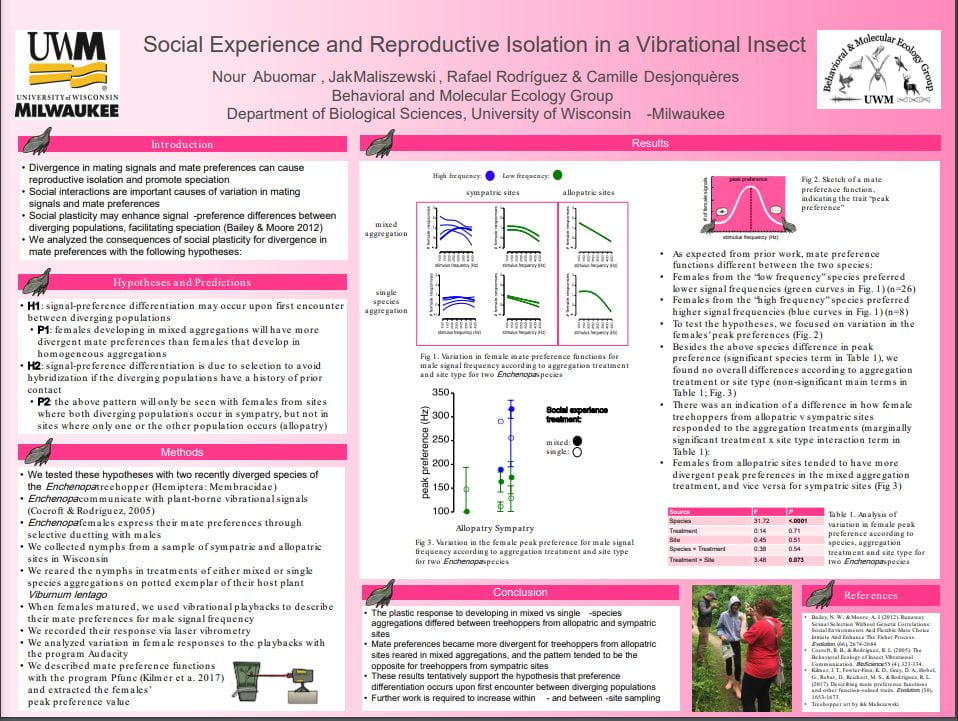Nour Abuomar, “Social Experience and Reproductive Isolation in a Vibrational Insect”
Mentors: Rafael Rodriguez, Camille Desjonqueres & Jak Maliszewski, Biological Sciences
Enchenopa binotata treehoppers are host plant-feeding insects that communicate through plant-borne vibrational signals. Typically, each species has a distinctive host plant species and male mating signal frequency (with the females of each species preferring the signal frequency of their males). At some sites, however, more than one species may be found on the same host plant. We chose to investigate whether developing in mixed- or single-species aggregations will affect an individual’s communicational behavior. Does developing in a mixed aggregation make communication systems more similar or more distinct? The consequences may weaken or strengthen reproductive isolation between the species. We raised two species of Enchenopa in treatments of either mixed or single-species aggregations from nymphs to adulthood. Once they reached adulthood, we assessed female preference with vibrational playbacks of male signals that ranged from high to low frequencies. When females heard an attractive call, they responded with their own mating call in return. By comparing the responses to the playbacks, we were able to determine which of the playback frequencies were preferred. We discuss our findings in terms of species reproductive isolation and the consequences for insect behavior in the wild.
Click the thumbnail below to open the full sized poster in a new tab.

Fantastic job! Poster carefully prepared and organized in a way to catch the attention of the audience.
Nice graphs and table
Nice discussion and interpretation
Nice flow of the poster. It reads really well.
Missing Acknowledgments section
Good job, Nour!
Your poster was well designed and easy to follow.
Very good reference section.
The topic was interesting to a non-biologist, and I would have like to know more about the importance of the overall context of this research. What will it teach us and how is this transferable?